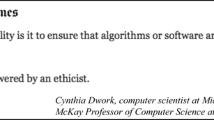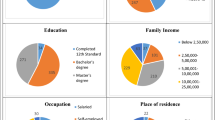Abstract
Recent research suggests that the method of making a payment can influence the willingness to pay and consumption behavior. In this manuscript, we argue that payment mechanisms differ from each other along the dimensions of transparency, and that the degree of transparency correlates positively with the pain of paying using the mechanism, and negatively with consumption and spending. We replicate previous experimental results using quasi-experiments from the field, and find that the lower the payment transparency, the greater is the consumption. However, this effect is weak for products whose consumption rates are inflexible.
Similar content being viewed by others
References
Ailawadi, K. and S. Neslin. (1998). “The Effect of Promotion on Consumption: Buying More and Consuming it Faster,” Journal of Marketing Research, 35(August), 390–398.
Aslett, D. (2001). The Cleaning Encyclopedia. New York, NY: Dell Publishing Co.
Gourville, J. and D. Soman (1998), “Payment Depreciation: The Behavioral Effects of Temporally Separating Payments from Consumption,” Journal of Consumer Research, 25(2), 160–174.
Hirschman, E. (1979). “Differences in Consumer Purchase Behavior by Credit Card Payment System,” Journal of Consumer Research, 6, 58–66.
Prelec, D. and G. Loewenstein. (1998). “The Red and the Black: Mental Accounting of Savings and Debt,” Marketing Science, 17(1), 4–28.
Prelec, D. and D. Simester. (2001). “Always Leave Home Without It: A Further Investigation of the Credit Card Effect on Willingness to Pay,” Marketing Letters, 12(February), 5–12.
Schneider, I. (2002). “Don't Leave Home Without IT,” Bank Systems and Technology, 39(November), 30–34.
Soman, D. (2001). “Effects of Payment Mechanism on Spending Behavior: The Role of Rehearsal and Immediacy of Payments,” Journal of Consumer Research, 27(March), 460–474.
Soman, D. and V. Lam. (2002). “The Effects of Prior Spending on Future Spending Decisions: The Role of Acquisition Liabilities and Payments,” Marketing Letters, 13(November), 359–372.
Yoon, S. K. (2001). “Tangled Octopus,” Far Eastern Economic Review, 164(July 5), 40.
Zellermayer, O. (1996). The Pain of Paying, Ph.D. Dissertation, Carnegie Mellon University.
Author information
Authors and Affiliations
Rights and permissions
About this article
Cite this article
Soman, D. The Effect of Payment Transparency on Consumption: Quasi-Experiments from the Field. Marketing Letters 14, 173–183 (2003). https://doi.org/10.1023/A:1027444717586
Issue Date:
DOI: https://doi.org/10.1023/A:1027444717586




